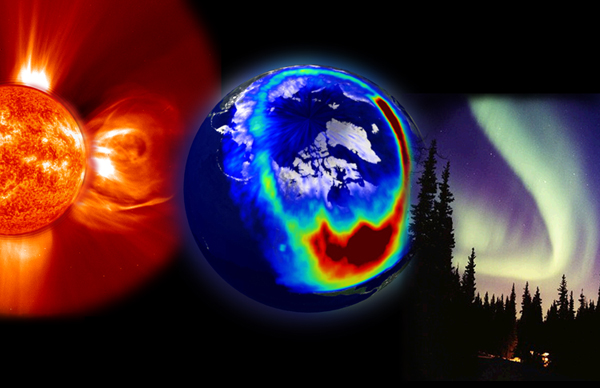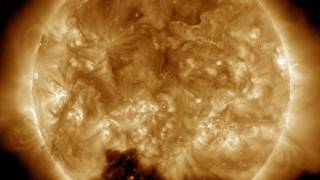More Active Sun Means Nasty Solar Storms Ahead
Source: space.com

The sun is about to get a lot more active, which could have ill effects on Earth. So to prepare, top sun scientists met Tuesday to discuss the best ways to protect Earth’s satellites and other vital systems from the coming solar storms.
Solar storms occur when sunspots on our star erupt and spew out flumes of charged particles that can damage power systems. The sun’s activity typically follows an 11-year cycle, and it looks to be coming out of a slump and gearing up for an active period.
"The sun is waking up from a deep slumber, and in the next few years we expect to see much higher levels of solar activity," said Richard Fisher, head of NASA’s Heliophysics Division. "At the same time, our technological society has developed an unprecedented sensitivity to solar storms. The intersection of these two issues is what we’re getting together to discuss."
Fisher and other experts met at the Space Weather Enterprise Forum, which took place in Washington, D.C., at the National Press Club.
Bad news for gizmos
People of the 21st century rely on high-tech systems for the basics of daily life. But smart power grids, GPS navigation, air travel, financial services and emergency radio communications can all be knocked out by intense solar activity.
A major solar storm could cause twenty times more economic damage than Hurricane Katrina, warned the National Academy of Sciences in a 2008 report, "Severe Space Weather Events—Societal and Economic Impacts." [Photos: Sun storms.]
Luckily, much of the damage can be mitigated if managers know a storm is coming. That’s why better understanding of solar weather, and the ability to give advance warning, is especially important.
Putting satellites in ’safe mode’ and disconnecting transformers can protect electronics from damaging electrical surges.
"Space weather forecasting is still in its infancy, but we’re making rapid progress," said Thomas Bogdan, director of the National Oceanic and Atmospheric Administration (NOAA)’s Space Weather Prediction Center in Boulder, Colo.
Eyes on the sun
NASA and NOAA work together to manage a fleet of satellites that monitor the sun and help to predict its changes.
A pair of spacecraft called STEREO (Solar Terrestrial Relations Observatory) is stationed on opposite sides of the sun, offering a combined view of 90 percent of the solar surface. In addition, SDO (the Solar Dynamics Observatory), which just launched in February 2010, is able to photograph solar active regions with unprecedented spectral, temporal and spatial resolution. Also, an old satellite called the Advanced Composition Explorer (ACE), which launched in 1997, is still chugging along monitoring winds coming off the sun. And there are dozens more dedicated to solar science.
"I believe we’re on the threshold of a new era in which space weather can be as influential in our daily lives as ordinary terrestrial weather." Fisher said. "We take this very seriously indeed."
Article from: Space.com






















